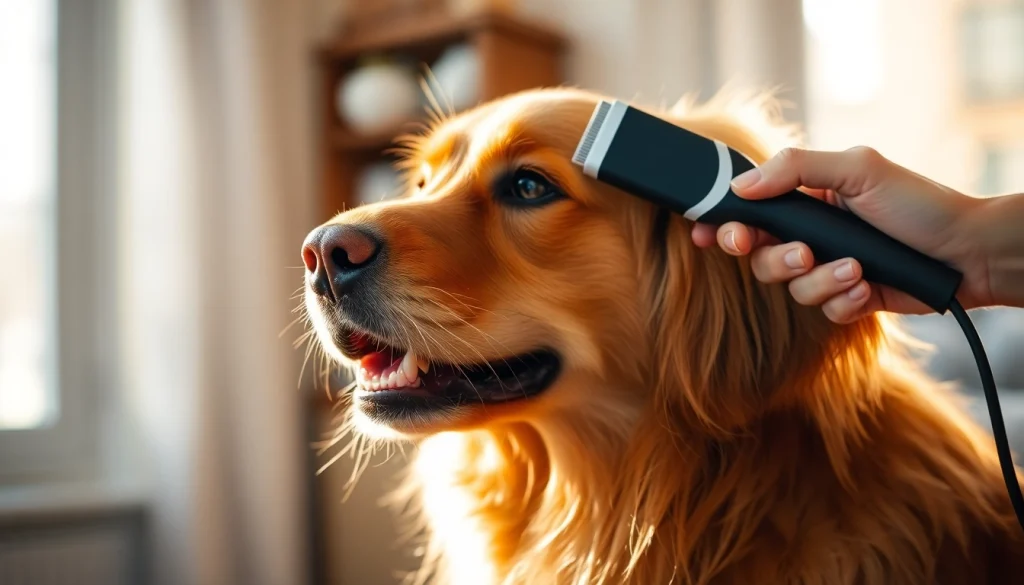
Understanding the Importance of a Dog Deshedding Tool
What is a Dog Deshedding Tool?
A dog deshedding tool is a specially designed grooming device aimed at removing loose, dead hair from your dog’s coat. Unlike traditional brushes, which merely move hair around, deshedding tools are equipped with finer, often metal teeth that can reach into the undercoat to pull out excess fur. They come in various shapes and sizes, specifically tailored to match different coat types, from the sleek fur of Greyhounds to the thick, double coats of Golden Retrievers. By regularly using a dog deshedding tool, pet owners can effectively manage shedding and contribute to their pet’s overall health and comfort.
Why Deshedding Matters for Your Dog’s Health
Regular grooming is essential not only for aesthetic reasons but also for the health of your dog. Shedding can be particularly problematic for both short and long-haired breeds, leading to discomfort and issues such as matting, skin irritation, and even over-heating in warmer climates. A deshedding tool helps to prevent these issues by removing the dead undercoat that can trap moisture and dirt against the skin.
Additionally, frequent deshedding can contribute to a healthier coat. It allows for the spread of natural oils from the skin throughout the fur, promoting a shiny, well-nourished appearance. The process also serves as a bonding experience between pet and owner, enhancing trust and affection. More importantly, managing shedding can significantly reduce allergens in the home, ensuring both you and your furry friend live in a comfortable environment.
Choosing the Right Tool for Different Breeds
Choosing the appropriate deshedding tool largely depends on your dog’s breed, size, and coat type. For instance, double-coated breeds like Huskies and Shepherds require more specialized tools that can penetrate their thick undercoat. On the other hand, short-haired dogs like Beagles may benefit from simpler deshedding options or even rubber grooming tools that effectively collect loose hair while being gentle on their skin.
When selecting a tool, consider the following:
- Coat Type: Look for tools specifically designed for your dog’s coat. Long-haired dogs might require slicker brushes alongside traditional deshedding tools, while short-haired breeds may only need a rubber squeegee-style brush.
- Dog Size: The size of the tool should match the size of your dog. Smaller tools may take longer for larger breeds and can be physically taxing on both parties.
- Material: High-quality materials may be more expensive, but they typically last longer and provide better results.
Benefits of Using a Dog Deshedding Tool
Reducing Shedding and Allergens in Your Home
One of the most immediate benefits of using a dog deshedding tool is the significant reduction in shedding around your home. Pets shed seasonally, but certain breeds can shed year-round. By effectively managing your dog’s coat with a deshedding tool, you not only keep your living space cleaner but also minimize allergens associated with pet dander. This is particularly beneficial for families with allergies or respiratory sensitivities.
Improving Your Dog’s Coat Health and Shine
Regular use of a deshedding tool can greatly enhance the condition of your dog’s coat. By removing dead hair, you help to air out the undercoat, promoting healthier hair growth and preventing skin issues such as hotspots or dermatitis. As you deshed your dog, you’re also helping to distribute the natural oils that keep their skin hydrated and fur shiny. This results not only in a healthier coat but also in a dog that looks and feels their best.
Enhancing the Bond Between You and Your Pet
Grooming is an intimate activity that can significantly strengthen the bond between you and your pet. The time spent deshedding your dog allows for one-on-one interaction, helping to build trust and affection. If approached correctly, grooming can be a calming experience for both you and your dog. It’s an opportunity to connect, understand your pet’s moods, and provide them with the attention they crave.
How to Use a Dog Deshedding Tool Effectively
Step-by-Step Guide to Deshedding Your Dog
Using a dog deshedding tool effectively involves more than just brushing your dog. Follow these steps for optimal results:
- Prepare Your Dog: Choose a quiet space where your dog feels comfortable. If your dog is nervous about grooming, begin by letting them sniff and explore the deshedding tool.
- Brush the Coat: Start by brushing your dog’s coat with a regular brush to remove tangles and debris.
- Using the Deshedding Tool: Hold the tool at a 45-degree angle to your dog’s skin. Gently slide it through the coat in the direction of hair growth, using short strokes. Avoid pressing too hard; let the tool do the work.
- Pay Attention to Trouble Spots: Areas around the ears, neck, and tail may need more attention, as they often hold more loose hair.
- Clean the Tool: Regularly clean your deshedding tool during the process to prevent hair from getting stuck in the teeth.
- Finishing Touches: Once deshedding is complete, give your dog a treat and praise them for their cooperation.
Tips for Making Grooming a Positive Experience
To ensure grooming is a pleasant experience for your dog, consider the following tips:
- Start Young: If possible, begin deshedding when your dog is a puppy. Early positive experiences can cultivate a lifetime of comfort with grooming.
- Use Treats: Reward your dog with treats or love after each grooming session to create a positive association.
- Keep Sessions Short: Initially, keep grooming sessions short to avoid overwhelming your dog. Gradually increase the time as they become more comfortable.
- Stay Calm: Your dog will pick up on your mood. Stay calm and relaxed during the process to help soothe any nervousness they may have.
Frequency of Use for Optimal Results
The frequency of deshedding largely depends on your dog’s breed, coat type, and shedding patterns. Here are some general guidelines:
- Short-haired breeds: These dogs may require deshedding every few weeks.
- Medium-haired breeds: Weekly deshedding will generally suffice.
- Long-haired breeds: Daily or bi-weekly sessions are often necessary to keep their coat healthy and manageable.
Monitor the amount of loose hair being removed to adjust your grooming schedule. Regular usage not only improves your dog’s comfort but also minimizes mess in your home.
Common Mistakes When Using a Dog Deshedding Tool
Over-Grooming: How Much is Too Much?
While grooming is essential, overdoing it can lead to skin irritation and other issues. Signs of over-grooming include redness, sensitivity, or signs of pain when brushing. It’s essential to balance grooming frequency with your dog’s comfort level. If you notice any discomfort, reduce the frequency, and allow your dog’s skin to recover.
Not Considering Your Dog’s Coat Type
Another common misstep is using the wrong tool for your dog’s coat type. Each breed has unique grooming needs, and using an inappropriate tool can lead to ineffective grooming or harm your pet’s skin. Always consider your dog’s coat characteristics, including length, texture, and density, to select the right deshedding tool.
Ignoring Signs of Discomfort During Grooming
Watch closely for your dog’s body language during grooming sessions. If they exhibit signs of stress, fear, or aggression, take it as a cue to stop and reassess the approach. The goal is for grooming to be a positive experience, reinforcing your bond rather than causing distress. Consult with a professional groomer or veterinarian if your dog consistently shows signs of discomfort.
Choosing the Best Dog Deshedding Tool on the Market
Comparing Top Brands and Features
With several brands and models of dog deshedding tools available, knowing how to evaluate them is crucial. Some popular brands include Furminator, Hertzko, and Pet Neat, known for their effectiveness and durable designs. Look for features such as ergonomic handles, replaceable blades, and ease of cleaning when making your selection.
Reading Customer Reviews and Recommendations
Before purchasing a deshedding tool, it’s beneficial to read customer reviews and recommendations. These insights can provide a practical understanding of how effective a particular tool is for different breeds and coat types. Pay attention to any recurring themes in reviews and choose a product that consistently meets user expectations.
Understanding Pricing and Value for Money
The price range for dog deshedding tools can vary widely. While more expensive models often provide advanced features and better durability, many budget-friendly options offer similar effectiveness. When evaluating value for money, consider the longevity of the product, the quality of materials used, and the experiences of other users. Investing in a high-quality tool may save you money in the long run, as it typically lasts longer and requires fewer replacements.






